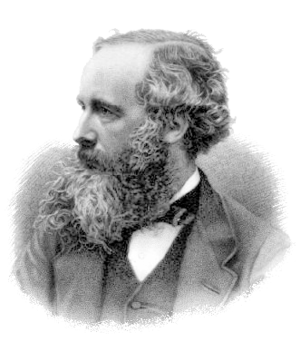James Clerk Maxwell (nonfiction): Difference between revisions
No edit summary |
|||
| Line 21: | Line 21: | ||
== Nonfiction cross-reference == | == Nonfiction cross-reference == | ||
* [[Horace Lamb (nonfiction)]] - Student | |||
* [[John Henry Poynting (nonfiction)]] - Student | |||
* [[Mathematics (nonfiction)]] | * [[Mathematics (nonfiction)]] | ||
* [[Maxwell's demon (nonfiction)]] | * [[Maxwell's demon (nonfiction)]] | ||
* [[Physics (nonfiction)]] | * [[Physics (nonfiction)]] | ||
* [[William Hopkins (nonfiction)]] - Academic advisor | |||
External links: | External links: | ||
| Line 29: | Line 32: | ||
* [https://en.wikipedia.org/wiki/James_Clerk_Maxwell James Clerk Maxwell] @ Wikipedia | * [https://en.wikipedia.org/wiki/James_Clerk_Maxwell James Clerk Maxwell] @ Wikipedia | ||
[[Category:Nonfiction (nonfiction)]] | [[Category:Nonfiction (nonfiction)]] | ||
[[Category:Mathematicians (nonfiction)]] | [[Category:Mathematicians (nonfiction)]] | ||
[[Category:People (nonfiction)]] | [[Category:People (nonfiction)]] | ||
[[Category:Physics (nonfiction)]] | [[Category:Physics (nonfiction)]] | ||
Revision as of 19:13, 20 November 2017
James Clerk Maxwell FRS FRSE (13 June 1831 – 5 November 1879) was a Scottish scientist in the field of mathematical physics.
His most notable achievement was to formulate the classical theory of electromagnetic radiation, bringing together for the first time electricity, magnetism, and light as manifestations of the same phenomenon. Maxwell's equations for electromagnetism have been called the "second great unification in physics" after the first one realized by Isaac Newton.
With the publication of "A Dynamical Theory of the Electromagnetic Field" in 1865, Maxwell demonstrated that electric and magnetic fields travel through space as waves moving at the speed of light. Maxwell proposed that light is an undulation in the same medium that is the cause of electric and magnetic phenomena. The unification of light and electrical phenomena led to the prediction of the existence of radio waves.
Maxwell's work on thermodynamics led him to devise the thought experiment that came to be known as Maxwell's demon, where the second law of thermodynamics is violated by an imaginary being capable of sorting particles by energy.
Maxwell helped develop the Maxwell–Boltzmann distribution, a statistical means of describing aspects of the kinetic theory of gases. He is also known for presenting the first durable color photograph in 1861 and for his foundational work on analyzing the rigidity of rod-and-joint frameworks (trusses) like those in many bridges.
His discoveries helped usher in the era of modern physics, laying the foundation for such fields as special relativity and quantum mechanics. Many physicists regard Maxwell as the 19th-century scientist having the greatest influence on 20th-century physics. His contributions to the science are considered by many to be of the same magnitude as those of Isaac Newton and Albert Einstein. On the centenary of Maxwell's birthday, Einstein described Maxwell's work as the "most profound and the most fruitful that physics has experienced since the time of Newton".
In the News
Steganographic analysis of Maxwell's demon reveals two terabytes of encrypted data.
Fiction cross-reference
Nonfiction cross-reference
- Horace Lamb (nonfiction) - Student
- John Henry Poynting (nonfiction) - Student
- Mathematics (nonfiction)
- Maxwell's demon (nonfiction)
- Physics (nonfiction)
- William Hopkins (nonfiction) - Academic advisor
External links:
- James Clerk Maxwell @ Wikipedia
